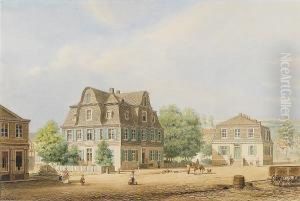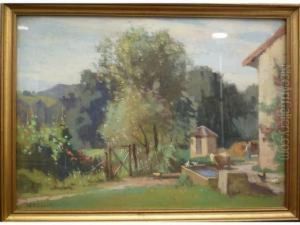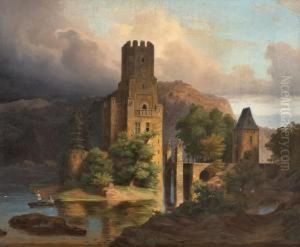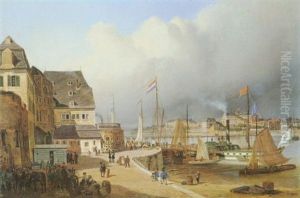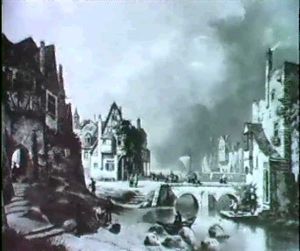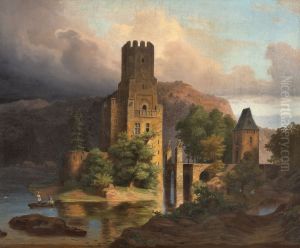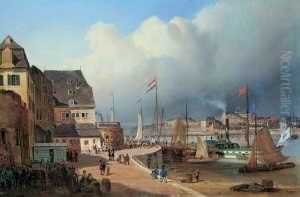Adolf Wegelin Paintings
Adolf Wegelin, sometimes referred to as Johann Friedrich Adolf Wegelin, was a German artist known for his contributions to 19th-century painting. He was born in 1829 in Oberhausen, Germany, and showed an early interest in the arts. His education in art began at the Düsseldorf Academy, one of the most significant art institutions in Germany at the time, where he studied under influential teachers and was exposed to various artistic styles and techniques.
Wegelin's style was shaped by the Düsseldorf school of painting, which emphasized detail, color, and a romantic approach to landscapes and historical subjects. During his career, he became known for his landscape paintings, which often showcased the natural beauty of the German countryside. His works displayed a remarkable attention to detail and a deep appreciation for the interplay of light and shadow, typical of the Düsseldorf school's approach.
Beyond landscapes, Wegelin also created genre scenes that depicted the everyday life of people, capturing the cultural and social aspects of his era with sensitivity and a keen observational eye. His genre paintings often included rural and domestic scenes, which were popular with the middle-class audience of the time.
As a contemporary to the likes of Andreas Achenbach and Oswald Achenbach, who were also prominent figures of the Düsseldorf school, Wegelin contributed to the school's reputation and the spread of its influence across Europe. Although not as widely known as some of his contemporaries, his work was appreciated for its artistic merits and the way it encapsulated the spirit of the period.
Wegelin's art was exhibited in various galleries and was collected by art enthusiasts of his time. Despite the shifts in artistic trends and the rise of new art movements at the turn of the 20th century, Wegelin remained committed to his style and continued to produce work that resonated with his audience. He passed away in 1911, leaving behind a body of work that, while perhaps not revolutionary, was a testament to the skills and sensibilities of the Düsseldorf school and its impact on 19th-century German art.
